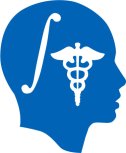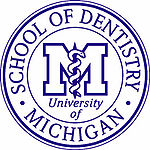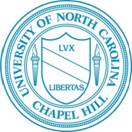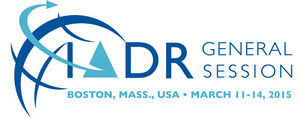Difference between revisions of "Construction and Superimposition of 3D Surface Models IADR 2015"
JuliaLopinto (talk | contribs) (Created page with '{| class="wikitable" | style="width:25%" |Image:NAMIC.jpg | style="width:25%" |Image:CWRU.png | style="width:25%" |150px | style="width:25%" |[[Image:UNC…') |
m (Text replacement - "http://www.slicer.org/slicerWiki/index.php/" to "https://www.slicer.org/wiki/") |
||
| (17 intermediate revisions by 2 users not shown) | |||
| Line 1: | Line 1: | ||
{| class="wikitable" | {| class="wikitable" | ||
| style="width:25%" |[[Image:NAMIC.jpg]] | | style="width:25%" |[[Image:NAMIC.jpg]] | ||
| − | |||
| style="width:25%" |[[Image:MU.jpg|150px]] | | style="width:25%" |[[Image:MU.jpg|150px]] | ||
| style="width:25%" |[[Image:UNC_uni.jpg]] | | style="width:25%" |[[Image:UNC_uni.jpg]] | ||
|} | |} | ||
| − | ==Editing Construction and Superimposition of 3D Surface Models | + | ==Editing Construction and Superimposition of 3D Surface Models== |
| + | [[File:IADR2015_cmyk_03.jpg|thumb|left|alt=2015 IADR/AADR/CADR General Session & Exhibition.|2015 IADR/AADR/CADR General Session & Exhibition.]] | ||
== Introduction == | == Introduction == | ||
| − | + | The superimposition of 3D surface models provide assessment of growth, changes with treatment, stability evaluation, improvement of the diagnosis allowing asymmetry evaluation, quantitative and qualitative analysis of skeletal and teeth displacement, TMJ evaluation, among other applications. Interpretation of the results depend on the structure of reference used for superimpositions or registration and it’s very important that the clinician is prepared and familiar with the technology, avoiding misunderstanding and incorrect interpretation of the image. | |
| − | + | This workshop will provide educators and clinicians with training for construction and superimposition of surface models by: | |
| − | This | + | (a) providing access to the National Alliance of Medical Image Computing (NA-MIC) and Dental and Craniofacial Bionetwork for Image Analysis (DCBIA) resources, which include software, documentation, and training materials (https://www.youtube.com/channel/UCQUtGe5KrpBt2k4mrNeHeUQ/videos); and |
| + | (b) problem-solving activities | ||
==Date and Location== | ==Date and Location== | ||
| − | Wednesday March 11th , 3:15 p.m. - 4:45 p.m | + | Wednesday March 11th , 3:15 p.m. - 4:45 p.m. Meeting Room 205 (Hynes Convention Center) |
| − | ==Workshop | + | ==Workshop== |
| − | |||
The workshop combines oral presentations and instructor-led hands-on sessions with the participants working on their own laptop computers. | The workshop combines oral presentations and instructor-led hands-on sessions with the participants working on their own laptop computers. | ||
| + | All participants are required to come with their own Mac or Windows laptop computers. A minimum of 1 GB of RAM (4 GB is better) and a graphic accelerator with 64mb (512MB is better) of on-board graphic memory is required. Shared memory graphics boards have significantly poorer performance. | ||
| + | ==Presenters== | ||
| + | * Lucia Cevidanes, DDS, PhD (Organizer) | ||
| + | * Tung Nguyen, DDS | ||
| + | * Beatriz Paniagua, PhD | ||
| − | == | + | ==Tentative Agenda== |
| + | 3:15 PM - 3:20 PM Software development updates (Beatriz Paniagua) | ||
| − | + | 3:20 PM - 3:25 PM Construction of surface models: A chair side perspective (Tung T. Nguyen) | |
| − | + | 3:25 PM - 3:30 PM Registration: remodeling and displacement in relative superimpositions (Lucia H. Cevidanes) | |
| − | |||
| − | + | 3.30 PM - 3.45 PM Installation | |
| − | |||
| − | + | 3.45 PM - 4.45 PM Hands-on workshop | |
| − | + | 4:45 PM Adjourn and final remarks | |
| + | ==Materials== | ||
| + | A USB drive will be provided with all datasets and software necessary for the hands-on part of this workshop. | ||
==Other Resources== | ==Other Resources== | ||
| − | + | * [https://www.slicer.org/wiki/Documentation/UserTraining Slicer tutorials] | |
| + | * [https://www.youtube.com/channel/UC11x1iQ7ydSIFYw4L6wveXg Slicer Youtube channel] | ||
| + | * [https://sites.google.com/a/umich.edu/dentistry-image-computing/ DCBIA website] | ||
| + | * [https://www.youtube.com/user/DCBIA DCBIA Youtube channel] | ||
==Participant List== | ==Participant List== | ||
Latest revision as of 17:36, 10 July 2017
Home < Construction and Superimposition of 3D Surface Models IADR 2015
|

|

|
Contents
Editing Construction and Superimposition of 3D Surface Models
Introduction
The superimposition of 3D surface models provide assessment of growth, changes with treatment, stability evaluation, improvement of the diagnosis allowing asymmetry evaluation, quantitative and qualitative analysis of skeletal and teeth displacement, TMJ evaluation, among other applications. Interpretation of the results depend on the structure of reference used for superimpositions or registration and it’s very important that the clinician is prepared and familiar with the technology, avoiding misunderstanding and incorrect interpretation of the image. This workshop will provide educators and clinicians with training for construction and superimposition of surface models by: (a) providing access to the National Alliance of Medical Image Computing (NA-MIC) and Dental and Craniofacial Bionetwork for Image Analysis (DCBIA) resources, which include software, documentation, and training materials (https://www.youtube.com/channel/UCQUtGe5KrpBt2k4mrNeHeUQ/videos); and (b) problem-solving activities
Date and Location
Wednesday March 11th , 3:15 p.m. - 4:45 p.m. Meeting Room 205 (Hynes Convention Center)
Workshop
The workshop combines oral presentations and instructor-led hands-on sessions with the participants working on their own laptop computers. All participants are required to come with their own Mac or Windows laptop computers. A minimum of 1 GB of RAM (4 GB is better) and a graphic accelerator with 64mb (512MB is better) of on-board graphic memory is required. Shared memory graphics boards have significantly poorer performance.
Presenters
- Lucia Cevidanes, DDS, PhD (Organizer)
- Tung Nguyen, DDS
- Beatriz Paniagua, PhD
Tentative Agenda
3:15 PM - 3:20 PM Software development updates (Beatriz Paniagua)
3:20 PM - 3:25 PM Construction of surface models: A chair side perspective (Tung T. Nguyen)
3:25 PM - 3:30 PM Registration: remodeling and displacement in relative superimpositions (Lucia H. Cevidanes)
3.30 PM - 3.45 PM Installation
3.45 PM - 4.45 PM Hands-on workshop
4:45 PM Adjourn and final remarks
Materials
A USB drive will be provided with all datasets and software necessary for the hands-on part of this workshop.
